General accounting
V. 26. Income Statement and Balance Sheet: beginning of a higher view
Video
We reached our first Income Statement and Balance Sheet. Now we shall begin to study them from a higher view-point.
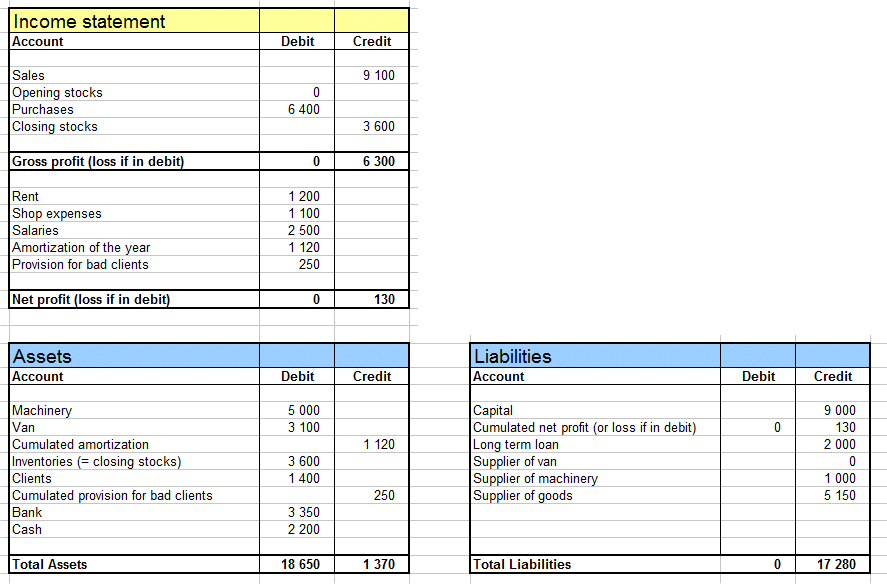
Comment on the IS:
- the opening stocks are 0 because we are at the end of the first cycle. In the next cycles, there will be some opening stocks (= the closing stocks of the previous cycle)
Comments on the BS:
- instead of "amortization BS", we wrote "cumulated amortization" because in the next cycles, the new amortization of the year, in the BS, will come in addition to the figure from past years
- same comment about the provisions for bad clients, and about the net profit or loss on the liability side
With these newly learned IS and BS, we are like a child who holds for the first time a violin in his hands. In the next lectures we shall begin to learn how to play the violin. In truth it will take years.
The above IS and BS come from the following journal:

and following TB
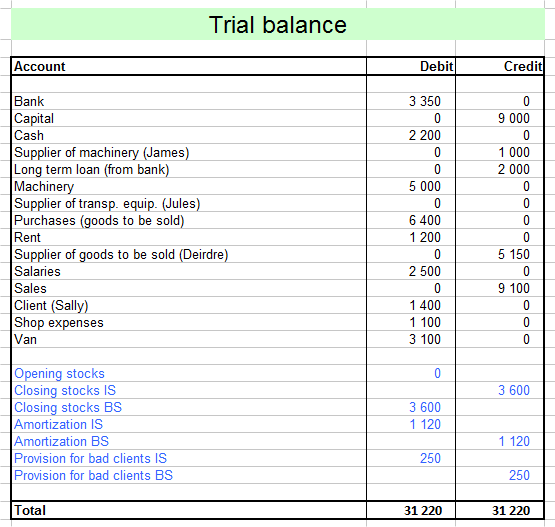
We included adjustments for stocks, for amortization and for provision for bad clients.
But we left aside other adjustments (for prepayments and for accruals) because they are less important concepts (although you must understand them, and if necessary go back to the lesson on this topic).
It is important that you be able to prepare the Trial balance from the above journal, and, after the adjustments (shown in blue), that you know how to prepare the Income Statement and the Balance Sheet.
The mini_accouting.xls is here to help you if necessary.
The Income Statement is comparatively the simpler of the two year-end documents.
An Income Statement concerns a whole accounting period, most usually a year, frequently the calendar year.
It measures sales minus all the costs to produce the sales.
And it yields the Profit or Loss (P&L).
Notice that some transactions do not impact immediately the IS.
For instance, suppose that we have a lot of cash, and we decide to invest some of it into "Short Term Financial Securities", which are sold on money markets. (The safest ST financial securities are government bonds of rich and powerful countries.)
This transaction, called "to park some money to make it work", will have no immediate impact of the IS.
There will simply be a change in the asset side of the BS:
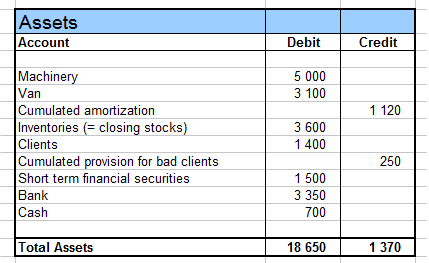
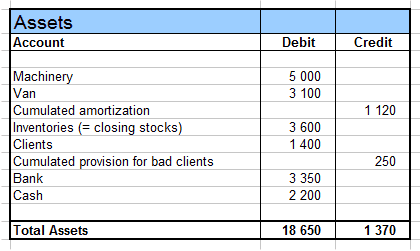
Here we see that 1500€ out of 2200€ of cash (left figure) was transformed into 1500€ worth of ST financial securites (right figure).
Another example: we buy more machinery financed with a new loan (of 1000€)
- On the asset side: the balance of the machiney account goes from 5000€ to 6000€
- On the liability side: the balance of the loan account goes from 2000€ to 3000€
Here is the BS before

and the BS after the transaction

Some vocabulary on the asset side:
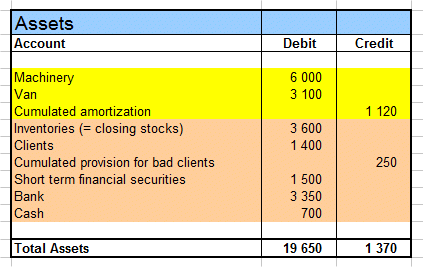
The machinery and van are called the "fixed assets" (sometimes "gross fixed assets"). Their sum is 9100€.
And the balance of the three accounts "machinery" + "van" + "cumulated amortization" (to be subtracted from the other two) is called the "net fixed assets": 7980€.
The accounts in orange are called the "current assets". Their sum (after having properly subtracted the provision) is 10 300€.
So the total (net) assets is 19 650 - 1370 = 18 280€.
Some vocabulary on the liability side:
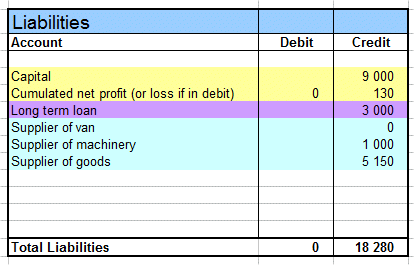
The top two accounts (capital and cumulated profit or loss) form the "net worth". Here it is 9130€.
The cumulated profit or loss is also called the "cumulated retained earnings".
The other accounts (in purple and light blue) are the external liabilities. They are of two types:
- the LT loan is a "costly debt". Each year we have to pay some interest for the use of this money. It is like renting a sum of money.
- the suppliers accounts are "free debt". Usually we don't have to pay anything to benefit from this suppliers credit.
The sum of the net worth plus the costly debt is called the "capital employed". It is the money "employed" to finance parts of the assets and which does not come for free. It comes from shareholders who will receive dividends and from other lenders who will receive interest payments. It cannot be employed elsewhere, since it is employed here. The amount of capital employed in the above example is 12 130€.
This was a first light survey of the new ways we shall look at the Income Statement and Balance Sheet. The higher view will be continued in the next lessons.



